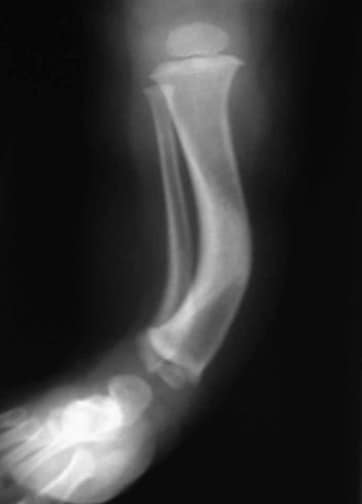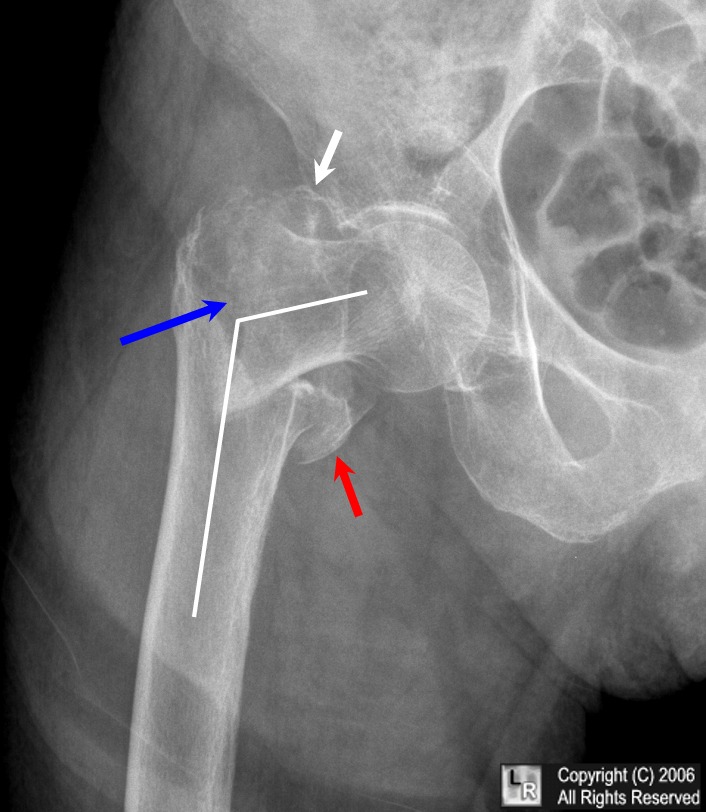miércoles, 27 de noviembre de 2013
lunes, 11 de noviembre de 2013
Radiology Search
There are multiple etiologies for tibial bowing (see Etiology). Tibial bowing specifically refers to bowing of the diaphysis of the tibia with the apex of the deformity directed anterolaterally, anteromedially, or posteromedially. Each type of bowing tends to have a classic etiology.
Read more:
http://emedicine.medscape.com/article/1251215-overview
Search more on:
Radiology Search
Read more:
http://emedicine.medscape.com/article/1251215-overview
Search more on:
Radiology Search
ARRS GoldMiner
The authors present a case of a patient with dementia with mood symptoms and multiple neurological manifestations of fragile X-associated tremor/ataxia syndrome (FXTAS). Despite a gradually deteriorating neurological course, he was managed for 2 years with combination therapy of donepezil and venlafaxine, which resulted in improvement and relative stabilization of his psychiatric status. Psychiatrists are hereby alerted to the description of a novel dementia syndrome that may respond to pharmacological intervention commonly used for other dementias.
Read more:
http://neuro.psychiatryonline.org/article.aspx?articleid=102737#Acknowledgments
Search:
ARRS GoldMiner
Read more:
http://neuro.psychiatryonline.org/article.aspx?articleid=102737#Acknowledgments
Search:
ARRS GoldMiner
Yottalook
· Hip fractures are associated with a substantial mortality, as many as 15-20% dying within one year of the fracture
· Conditions that predispose to hip fractures include aging, osteoporosis and osteomalacia
o Most hip fractures in the elderly (90%) occur as a result of a fall, frequently a minor fall such as from the standing position
· In younger individuals, hip fractures are often the result of high velocity, high impact trauma
· Most hip fractures occur in Caucasian women.
To read more:
Search:
JURN
Use of complementary and alternative medicine by patients with hematological diseases: experience at a university hospital in northeast Mexico
José Carlos Jaime-Pérez; Adrián Chapa-Rodríguez; Marisol Rodríguez-Martínez; Perla Rocío Colunga-Pedraza; Luis Javier Marfil-Rivera; David Gómez-Almaguer
Department of Hematology, Internal Medicine Division, Hospital Universitario "Dr. José Eleuterio González", Facultad de Medicina, Universidad Autónoma de Nuevo León - UANL, Monterrey, Mexico
ABSTRACT
BACKGROUND: Complementary and alternative medicine includes a diverse group of medical and healthcare systems, practices and products not considered part of conventional medicine. Although there is information on unconventional practices in oncological diseases, specific data regarding the use of complementary and alternative medicine by hematology patients is scarce.
OBJECTIVE: The aim of this study is to document the prevalence of this modality of unconventional therapy in patients with malignant and benign hematological diseases, particularly children with acute lymphoblastic leukemia.
METHODS: An observational study of adult patients and guardians of children with malignant or benign hematological diseases was carried out by applying a structured questionnaire detailing the use and results of the most prevalent complementary and alternative medicine practices.
RESULTS: One hundred and twenty patients were included; 104 had malignant and 16 had benign hematological diseases. The use of complementary and alternative medicine was greater in benign diseases but the difference was not statistically significant (64.7% versus 41.7%; p-value = 0.08). Patients and guardians with high school or college educations used these alternative practices more than patients with less schooling (60.7% versus 54.7%; p-value = 0.032). The use of folk remedies was most prevalent followed by herbal preparations and spiritual healing. Sixty-four percent of patients that used these unconventional practices reported improvement in their symptoms and increased capacity to perform daily activities.
CONCLUSION: No significant difference was documented between patients with malignant or benign hematological diseases using these alternative practices. The majority of complementary and alternative medicine users reported improvement of the disease or chemotherapy-related symptoms.
OBJECTIVE: The aim of this study is to document the prevalence of this modality of unconventional therapy in patients with malignant and benign hematological diseases, particularly children with acute lymphoblastic leukemia.
METHODS: An observational study of adult patients and guardians of children with malignant or benign hematological diseases was carried out by applying a structured questionnaire detailing the use and results of the most prevalent complementary and alternative medicine practices.
RESULTS: One hundred and twenty patients were included; 104 had malignant and 16 had benign hematological diseases. The use of complementary and alternative medicine was greater in benign diseases but the difference was not statistically significant (64.7% versus 41.7%; p-value = 0.08). Patients and guardians with high school or college educations used these alternative practices more than patients with less schooling (60.7% versus 54.7%; p-value = 0.032). The use of folk remedies was most prevalent followed by herbal preparations and spiritual healing. Sixty-four percent of patients that used these unconventional practices reported improvement in their symptoms and increased capacity to perform daily activities.
CONCLUSION: No significant difference was documented between patients with malignant or benign hematological diseases using these alternative practices. The majority of complementary and alternative medicine users reported improvement of the disease or chemotherapy-related symptoms.
Keywords: complementary therapies; herbal medicine; medicine, traditional; hematologic diseases
Vissit: JURN
Pubget
Family environment influences emotion recognition following paediatric traumatic brain injury
2010, Vol. 24, No. 13-14 , Pages 1550-1560 (doi:10.3109/02699052.2010.523047)
1Department of Physical Medicine and Rehabilitation, Baylor College of Medicine, Houston, TX, USA
*Correspondence: Adam T. Schmidt, PhD, 1709 Dryden Road, 12th Floor, Houston, TX 77030, USA 713.798.8837 713.798.6898 ats1978@gmail.
Objective: This study investigated the relationship between family functioning and performance on two tasks of emotion recognition (emotional prosody and face emotion recognition) and a cognitive control procedure (the Flanker task) following paediatric traumatic brain injury (TBI) or orthopaedic injury (OI).
Methods: A total of 142 children (75 TBI, 67 OI) were assessed on three occasions: baseline, 3 months and 1 year post-injury on the two emotion recognition tasks and the Flanker task. Caregivers also completed the Life Stressors and Resources Scale (LISRES) on each occasion. Growth curve analysis was used to analyse the data.Results: Results indicated that family functioning influenced performance on the emotional prosody and Flanker tasks but not on the face emotion recognition task. Findings on both the emotional prosody and Flanker tasks were generally similar across groups. However, financial resources emerged as significantly related to emotional prosody performance in the TBI group only (p = 0.0123).
Conclusions: Findings suggest family functioning variables—especially financial resources—can influence performance on an emotional processing task following TBI in children.
Read More: http://informahealthcare.com/doi/abs/10.3109/02699052.2010.523047?journalCode=bij
Scienceroll Search
Pompe disease, a rare but important genetic condition
by Dr. Bertalan Meskó on February 6, 2007
As I plan to become a clinical geneticist, I should write more often about genetic conditions. But I don’t want to duplicate the articles of Wikipedia, my aim is to provide useful sources of information. Pompe disease is a rare disorder caused by the deficiency of the acid alpha-glucosidase enzyme. It’s inherited in an autosomal recessive manner.
leer el texto completo aquí
miércoles, 6 de noviembre de 2013
Suscribirse a:
Entradas (Atom)




